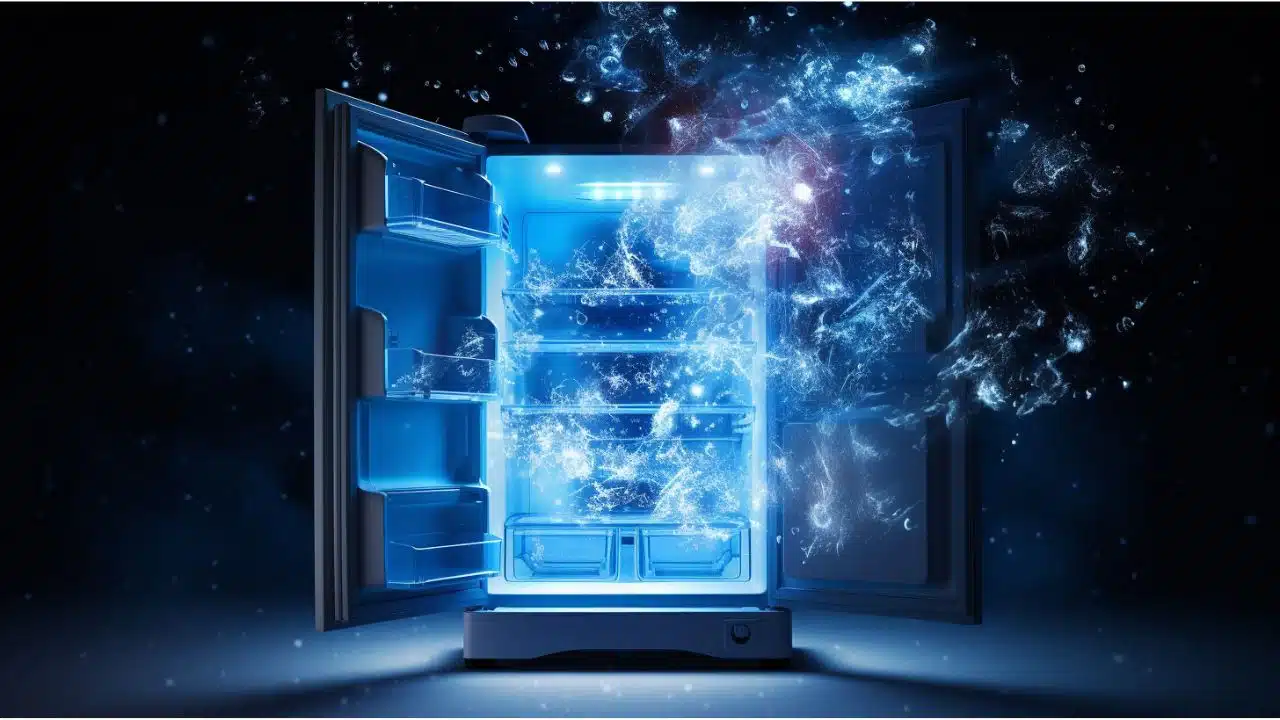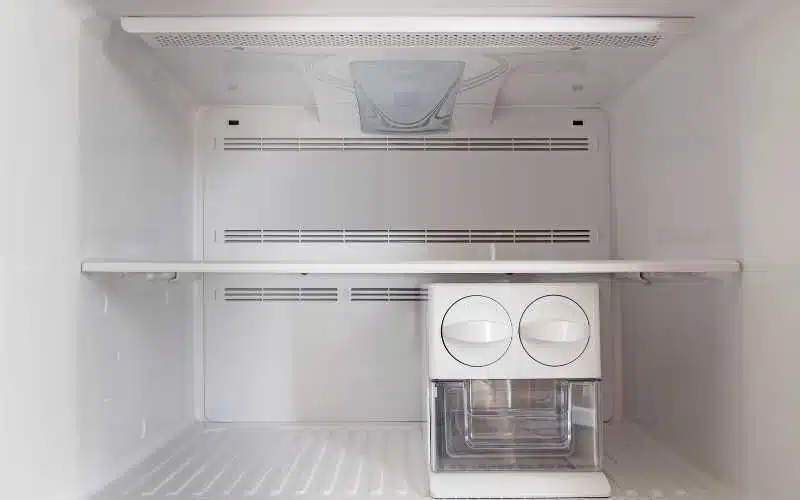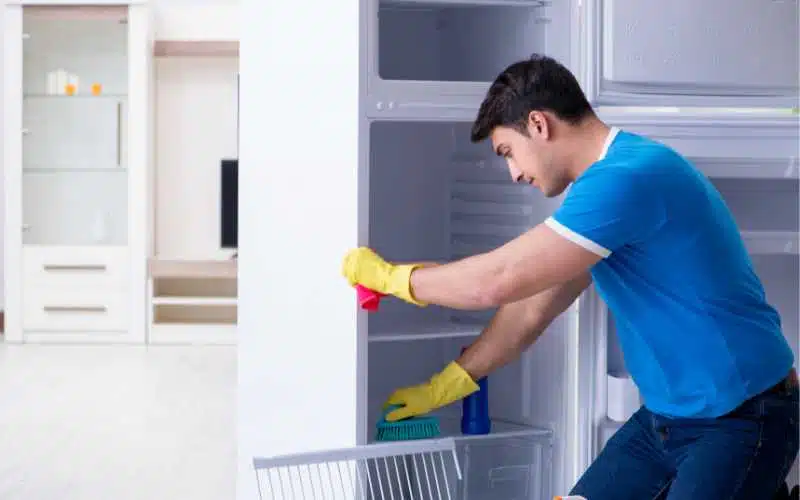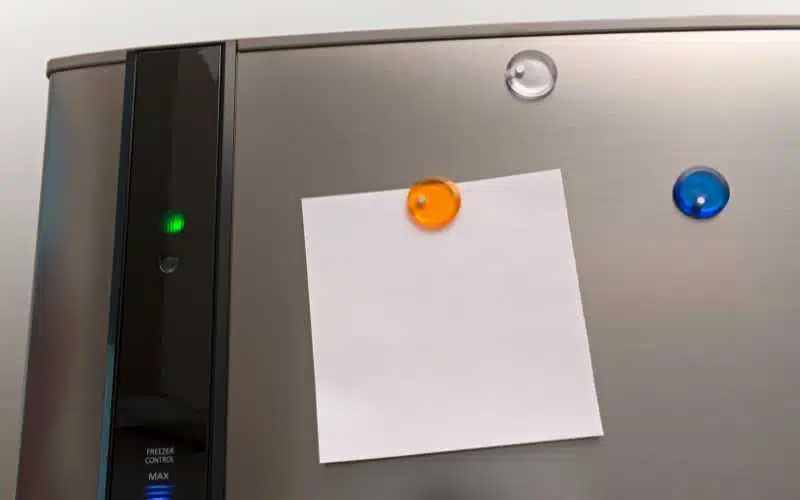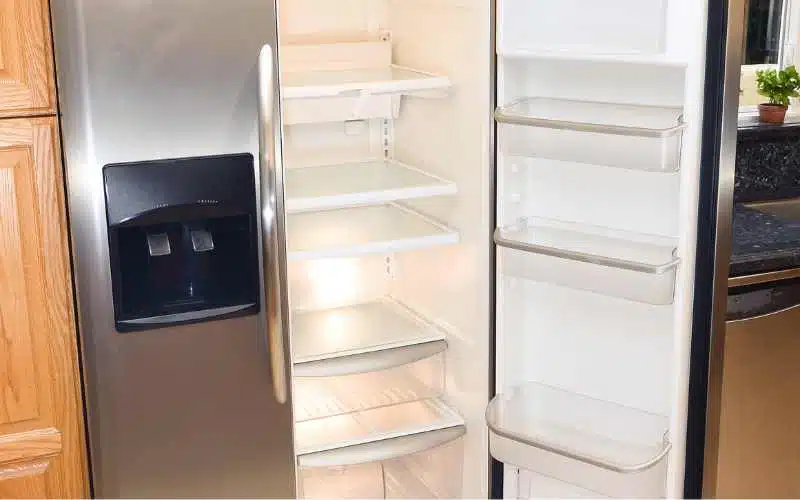Are you wondering why icicles form in your freezer? Of course, a little ice is not something you should beat yourself over, but excessive icicle build-up can signify problems in your freezer, or the freezer may not be running effectively.
Too many icicles in your freezer can be a problem, and it can also damage your food. This article will discuss the reasons for icicle build-up, methods to prevent it, and how to get rid of it completely.
Icicles form as a result of excess water build-up in the freezer. If there is constant exposure to moisture, you may see icicles. Icicles also form if warm air should come in contact with the freezer coils. Therefore, constant exposure to warm air is one common reason icicles form.
Why Does My Freezer Form Icicles?
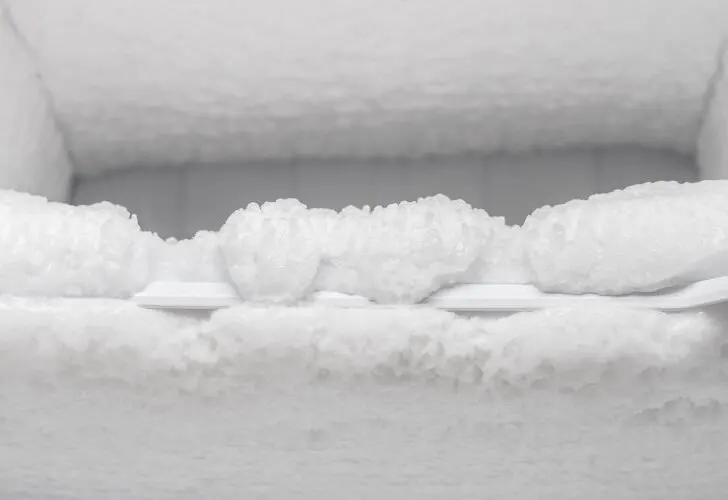
Your freezer forms icicles because of excessive water build-up inside the freezer.
Having little ice is normal, but your freezer may not run when it is too much. An understocked or overstocked freezer is one common cause of icicles.
The food will not freeze if there is no space for air to flow. If the freezer is understocked, there will be enough room for ice to form.
If there is too much moisturizer and humidity, you may see icicles. The reason for high moisture and humidity levels is if the freezer door is always left open for a long.
The external air will enter the freezer and change the temperature. The gasket or door seal might also be wrong.
If the gasket is damaged, cold air will leak out, and warm air will enter. Make sure you do not put hot food into the freezer.
Allow it cool before you put it into the freezer. Hot food will change the internal temperature.
Excess frost results in freezer burns; if you want to remove ice without defrosting, you can scrape the ice off using a spatula.
You can also place a metal spatula overheat to aid the process. Take safety measures if you decide to do this. Ensure you clean the freezer without leaving stagnant water.
If you are defrosting, you can use a hair dryer you speed up the process. Defrosting a freezer with a hair dryer is effective.
Move the dryer often, and do not use it for too long to prevent overheating. Do not attempt pouring hot water directly into the freezer.
The ice will pop and damage your freezer if you pour hot water. The hot water might get cold quicker than you expect and form more icicles.
Instead, pour the hot water into a bowl and place it in the freezer. Doing this will make it easy for you to scrape the ice off without damaging your freezer.
How Do You Prevent Icicles in the Freezer?
To prevent icicles in the freezer, you should follow the following instructions.
#1. Set Your Freezer Properly
If you see a lot of icicles in your freezer, it can indicate that the freezer is not functioning correctly. One common cause is improper airflow.
Also, if the coils are clogged or dirty, it can cause ice build-up because the coils are at the back of the freezer.
- Get a brush and take off the dirt from the coils.
- Inspect the vents in the freezer and ensure they are not clogged.
- If your freezer is in a tight corner, try moving it away to ensure good ventilation.
- Permanently close the freezer to prevent airflow because the inflow of moist air can cause icicles.
- Make sure nothing is preventing the door from sealing well. If the seals are old, replace them and wipe off anything on the seal preventing the door from sealing correctly.
- Adjust the thermometer if the temperature of your freezer is too high or too low. Set the temperature to 0°F.
Also, if you open your freezer often, the temperature can change. So please do not leave it open for too long.
#2. Do Not Expose Freezer to Air
- If you leave your freezer open, warm air will enter and freeze on the surface. So only open your freezer when you want to take something out.
- Remove the air from the storage bags in the freezer.
- Keep your freezer well stocked all the time. A fully stocked freezer will have less space for ice build-up.
- Do not leave food for too long. Storing food for a long time will make it lose moisture. The moisture accumulates and forms icicles.
#3. Defrost Your Freezer
Modern freezers have an automatic defrosting feature, while older ones do not. Check your manual to know more about it.
- Before defrosting, unplug it from the outlet and remove the food from it.
- Hold the door of the freezer open and let the ice melt.
- Gently scrape the ice off using a spatula. You can use hot water to aid this process.
- After removing the ice, clean the freezer using mild detergent.
- Put your food back in and turn your freezer on.
- Ensure you defrost when necessary.
How Do You Get Rid Of Ice Crystals in the Freezer?
To get rid of ice crystals, follow the following instructions.
#1. Scrape the Ice off
- Scrape the ice crystals with a spatula or a wooden spoon. This method is an easy method to remove ice crystals. Scrape till you remove all crystals.
- Apply alcohol and rub using a hot cloth. Dip a clean cloth into boiling water. Pour the alcohol on the cloth and place it on the ice crystals. The crystals will melt off. Get a dry cloth and soak the melted ice up. This process is more efficient for smaller chunks of ice.
- Use a hot metal spatula. Hold it over a flame and place the spatula on the ice. If you are using this method, you have to be extremely careful.
#2. Defrosting
- Take off everything from your freezer and unplug it from its power source.
- Remove any tray from the freezer and leave the door open for two to four hours. When the warm air in your home comes in contact with ice, it will melt quickly.
- Using a detergent or a dishwashing soap, clean the freezer when the ice melts. You can also use baking soda or vinegar and water solution.
- Plug the freezer into the outlet. After cleaning the freezer, plug it in and let it cool.
- Make sure the temperature is 0°F.
- Once the freezer is cool, restock your food items.
#3. Monitor the Thermostat
- Monitor the thermostat to ensure the temperature is right. The temperature should be at 0°F.
- Do not keep your freezer in a tight corner. There should be at least 30cm between the freezer and the wall, so there will be space for the coils to cool the freezer.
- Avoid leaving the door open when it is not in use. Close the door properly.
- Do not put hot food in the freezer. If the food item you want in the freezer is hot, allow it to cool first. Heat moisture will cause ice build-up.
Also, you can get antifreeze mats, coil cleaners, and new gaskets. Antifreeze mats prevent ice, coil cleaners from cleaning up dirt or clogs in the condenser coils, and new gaskets if the seals are spoilt.
Lastly, do not put your freezer close to a heat source. If you place it close to a furnace, oven, heater, etc. The freezer will overwork itself and cause ice crystals to form.
Is It Bad for Icicles to Form in the Freezer?
Having little icicles is cool, but it becomes a problem if it is too much. Excess icicles can make the freezer work ineffectively.
It makes the compressor overwork itself to maintain an ideal temperature. When the ice is in excess, you may have to perform several defrost cycles, and your electricity bills will increase.
Icicles also cause freezer burns. Freezer burns change the quality of food. It changes the taste, odor, and aroma of the food stored in the freezer, especially meats and veggies.
The freezer will begin to emit an unpleasant odor.
| Cons | Pros |
|---|---|
| It damages food | It keeps food safe if there is a power outage. |
| Poor operation | It prevents the food from spoiling. |
| High energy bills | It keeps bacterial growth from spreading on the food. |
Conclusion
Excessive ice build-up can happen due to several reasons. First, correctly find why icicles form in your freezer and prevent the results.
Install an innovative or on-demand system in your freezer so that it will detect ice and defrost when necessary.
